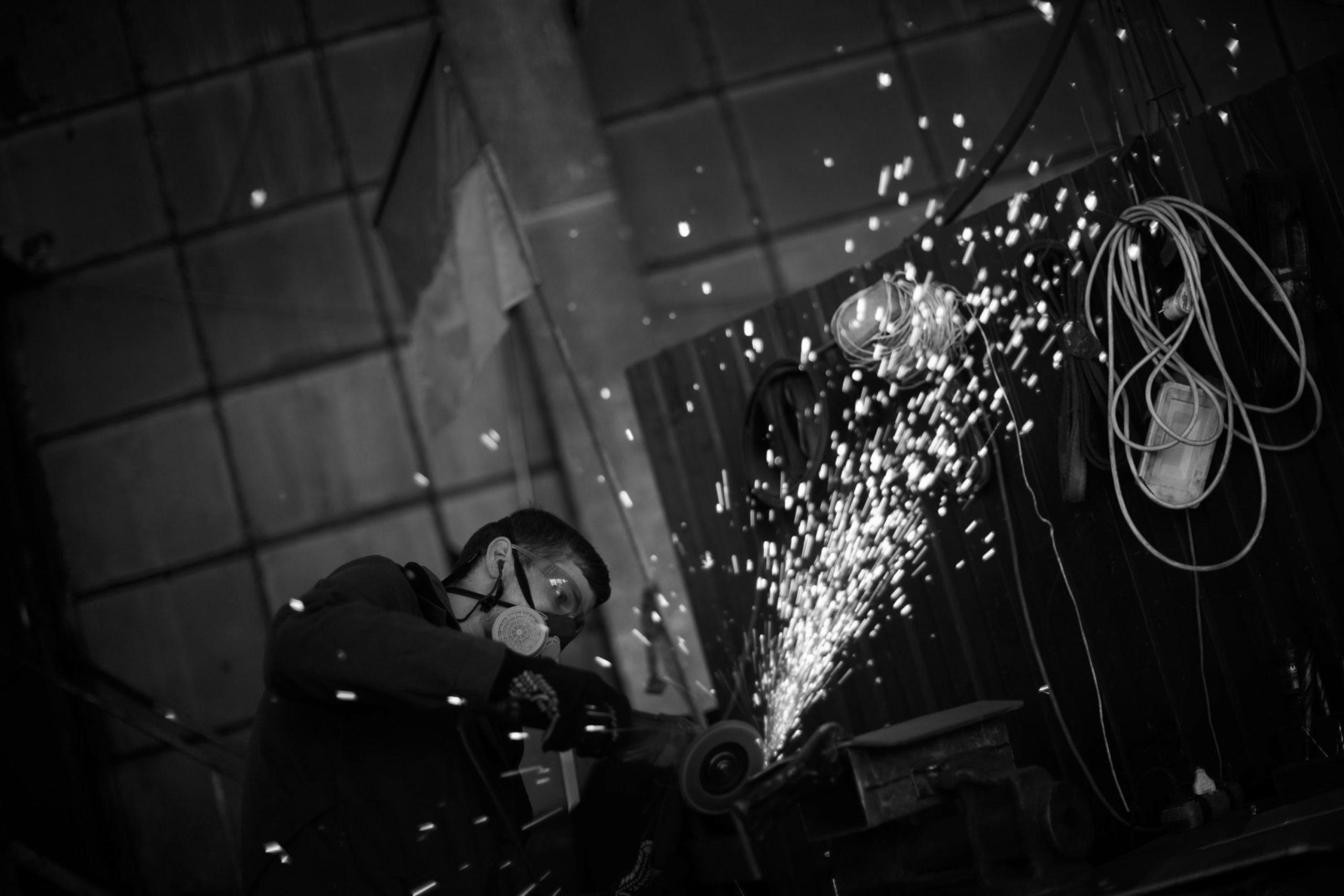Protect the physique: Ukraine volunteers craft armor, camouflage
Warning: Undefined variable $post_id in /home/webpages/lima-city/booktips/wordpress_de-2022-03-17-33f52d/wp-content/themes/fast-press/single.php on line 26

2022-05-09 09:16:18
#Protect #body #Ukraine #volunteers #craft #armor #camouflage
ZAPORIZHZHIA, Ukraine (AP) — Sparks fly as a circular saw slices into steel, whereas welders nearby work feverishly to the sound of blaring heavy metallic. Upstairs, sewing machines clatter as girls mark patterns on cloth being formed into bulletproof vests.
An old industrial advanced in the southeastern Ukrainian riverside city of Zaporizhzhia has turn out to be a hive of activity for volunteers producing every little thing from body armor and anti-tank obstacles to camouflage nets, transportable heating stoves and rifle slings for Ukrainian soldiers preventing Russia’s invasion. One part specializes in vehicles, armor-plating some, converting others into ambulances. Another organizes food and medical deliveries.
With the front line about 50 kilometers (30 miles) from the city, some sections of the operation, such as the stitching of bulletproof vests, are working around the clock in shifts to meet demand. Crowdfunding has brought in sufficient cash to buy metal from Sweden, Finland and Belgium, which is lighter than native steel, organizers say, a vital high quality for physique armor.
The operation is the brainchild of native celeb Vasyl Busharov and his pal Hennadii Vovchenko, who ran a furniture-making business. They named it Palianytsia, a kind of Ukrainian bread whose title many Ukrainians say cannot be pronounced properly by Russians.
The operation depends completely on volunteers, who now number more than 400 and are available from all walks of life, from tailors to craftsmen to attorneys. Apart from these involved in production, there are additionally drivers delivering humanitarian assist and medical equipment bought by way of donated funds.
“I feel I am needed right here,” said fashion designer Olena Grekova, 52, taking a brief break from marking fabric for vests.
When Russia invaded on Feb. 24, she was in Thailand looking for inspiration for her spring collection. Initially, she stated, she questioned whether or not it was a sign from God that she shouldn’t return. Her husband and two grownup sons urged her not to.
“But I made a decision that I had to return,” she mentioned.
She had known Busharov for years. Arriving residence on March 3, she gathered her equipment the next day and by March 5 was at Palianytsia. She’s been working there every single day since, bar one, generally even at night time.
Shifting from designing backless ballgowns to creating practical bulletproof vests was “a new experience for me,” Grekova said. However she sought feedback from troopers for her designs, which have armor plates added. Now she is helping to produce a number of variations, together with a prototype summer time vest.
In another part of the commercial advanced, 55-year-old Ihor Prytula was busy making a brand new camouflage internet, winding items of dyed material by way of a string body. A furniture-maker by trade, he joined Palianytsia at the beginning of the struggle. He had some military expertise, he said, so it was easy to get suggestions from troopers on what they wanted.
“We communicate the same language,” he stated.
For Prytula, the battle is private. His 27-year-old son was killed in late March as he helped evacuate people from the northern town of Chernihiv.
“The warfare and demise, it’s bad, trust me, I know this,” he stated. “It’s bad, it’s tears, it’s sorrow.”
The call for volunteers went out as quickly because the struggle began. Busharov introduced his mission on Fb on Feb. 25. The next day, 50 people turned up. “Next day 150 people, next day 300 folks. ... And all collectively, we strive (to) protect our city.”
They began out making Molovov cocktails in case Russian troopers advanced on Zaporizhzhia. In 10 days, they produced 14,000, he said. Then they turned to producing anti-tank obstacles generally known as hedgehogs — three massive steel beams soldered together at angles — used as a part of the city’s defenses. Soon, Busharov and Vovchenko stated, they found one other urgent need: there weren’t sufficient bulletproof vests for Ukraine’s soldiers.
But learning the right way to make one thing so specialized wasn’t straightforward.
“I wasn’t really related with the army at all,” stated Vovchenko. “It took two days and three sleepless nights to grasp what needs to be executed.”
The crew went by way of various forms of metal, making plates and testing them to verify bullet penetration. Some didn’t offer enough safety, others have been too heavy to be useful. Then they'd a breakthrough.
“It seems that steel used for car suspension has excellent properties for bullet penetration,” Vovchenko mentioned, standing in entrance of four cabinets of check plates with various levels of bullet damage. The one made from automotive suspension metal showed dozens of bullet marks however none that penetrated.
The vests and everything else made at Palianytsia are provided free to soldiers who request them, as long as they'll prove they are within the military. Every plate is numbered and every vest has a label noting it isn't for sale.
So far, Palianytsia has produced 1,800 bulletproof vests in two months, Busharov stated, adding there was a ready checklist of around 2,000 extra from throughout Ukraine.
Vovchenko stated they've heard about up to 300 individuals whose lives have been saved by the vests.
Knowing that's “incredibly inspiring and it keeps us going,” he said.
____
Inna Varenytsia in Zaporizhzhia, Ukraine, contributed.
___
Follow all AP stories on the battle in Ukraine at https://apnews.com/hub/russia-ukraine
Quelle: apnews.com